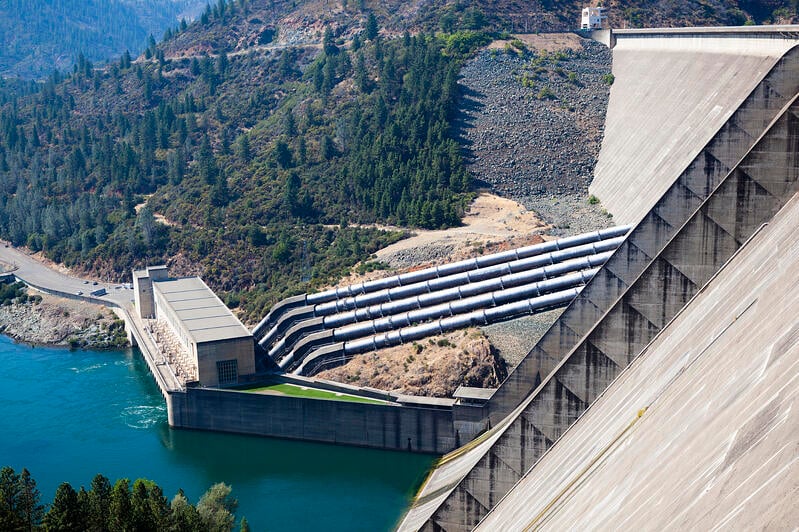The U.S. Environmental Protection Agency’s (EPA’s) plan to regulate carbon emissions is just the latest challenge facing the U.S. electric power system. Technological innovation is disrupting old ways of doing business and accelerating grid modernization. Earlier this year, AEE released Advanced Energy Technologies for Greenhouse Gas Reduction, a report detailing the use, application, and benefits of 40 specific advanced energy technologies and services. This post is one in a series drawn from the technology profiles within that report.

A hydroelectric power plant uses turbines and generators to convert the kinetic energy of moving water into electricity. There are three major types of hydroelectric power plants: impoundment, diversion (run-of-river), and pumped storage facilities. An impoundment facility uses a dam to store river water in a reservoir, which it then releases through a turbine to generate electricity. The height differential (“hydraulic head”) between the reservoir surface and the turbine outlet is what provides the energy for power generation. The Hoover Dam is a classic example. A diversion facility takes advantage of natural elevation changes along a river. Run-of-river plants tend to be smaller than impoundment plants, and low-impact, with diverted streams powering turbines before returning downstream. Niagara Falls is an exception, with the Moses Niagara Power Plant and the Lewiston Pump Generating Plant together supplying 2.4 GW of hydro capacity. A pumped storage facility pumps water from a lower to an upper reservoir when electricity demand is low and releases the water back into the lower reservoir to generate electricity when demand is high. It is a form of bulk energy storage. In addition to these three major hydro variants, there is a niche application called in-conduit hydropower. Conduit projects use water supply infrastructure such as tunnels, irrigation canals, and pipelines and outfit them with mini turbines and generating equipment.
Hydroelectric power currently constitutes the largest and oldest source of renewable electricity in the United States. It produced 56% of renewable electricity in the United States in 2012, and 7% of the total from all sources. The current generating capacity of hydroelectric power in the United States is nearly 80 GW and there is potential to add an additional 12 GW to existing dams.
Greenfield development of new hydropower is relatively expensive and involves a long regulatory approval process. However, these plants have very long useful lives – longer than other types of power plants – and have power costs that are among the lowest available, owing to low operating costs and the ability to recover capital costs over long time periods. Existing hydropower plants are one of the cheapest sources of energy in the United States and are ideal for baseload power. Currently only 3% of the 80,000 dams in the United States produce electricity. While not all are suitable for powering, these dams represent an opportunity to expand hydro at low cost – as low as 1 cent per kWh – with minimal environmental impact. Hydroelectric power plants abated nearly 200 million metric tons of carbon emissions in 2012, the equivalent of 40 million cars.
